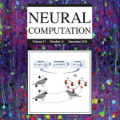Artificial Intelligence agents are required to learn from their surroundings and to reason about the knowledge that has been learned in order to make decisions. While state-of-the-art learning from data typically uses sub-symbolic distributed representations, reasoning is normally useful at a higher level of abstraction with the use of a first-order logic language for knowledge representation. As a result, attempts at combining symbolic AI and neural computation into neural-symbolic systems have been on the increase. In this paper, we present Logic Tensor Networks (LTN), a neurosymbolic formalism and computational model that supports learning and reasoning through the introduction of a many-valued, end-to-end differentiable first-order logic called Real Logic as a representation language for deep learning. We show that LTN provides a uniform language for the specification and the computation of several AI tasks such as data clustering, multi-label classification, relational learning, query answering, semi-supervised learning, regression and embedding learning. We implement and illustrate each of the above tasks with a number of simple explanatory examples using TensorFlow 2. Keywords: Neurosymbolic AI, Deep Learning and Reasoning, Many-valued Logic.
翻译:要求人工智能人员从周围学习,并了解为作出决定而学到的知识。尽管从数据中最先进的学习通常使用分流分布的分流表,但推理通常在更高层次的抽象层次上有用,因为使用一阶逻辑语言来代表知识。结果,试图将象征性的人工智能和神经计算结合到神经和听音系统的努力正在增加。在本文件中,我们介绍了逻辑天线网络(LTN),一种神经同步的正规化和计算模型,通过引入一个许多有价值、端到端的不同一阶逻辑,称为Real Lologic,作为深层次学习的一种代言词,支持学习和推理。我们表明,LTNT为诸如数据组合、多标签分类、关系学习、问答、半超前学习、回归和嵌入学习等数项人工智能任务的规格和计算提供了统一语言。我们用一系列简单的解释性例子来实施和说明上述每一项任务,包括使用DeepsorFolormaricaling、Lologymaisal2. Keyword:News:News



